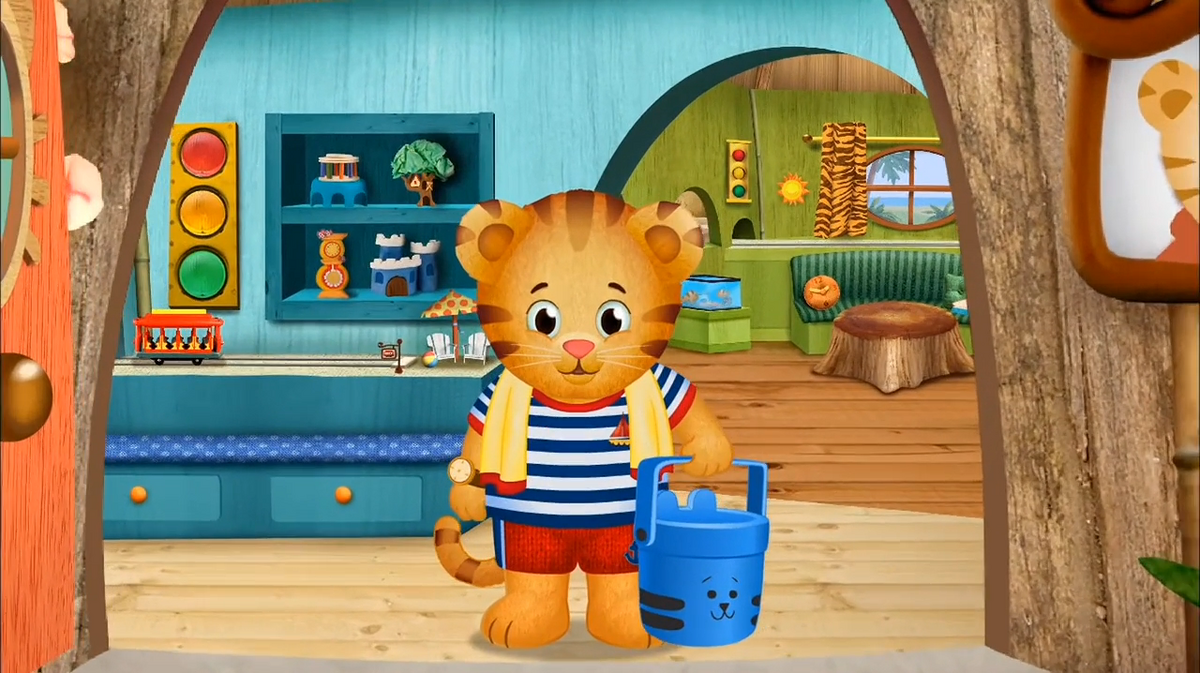As a parent, I often find myself caught in the whirlwind of emotions that come with raising young children. One of the biggest challenges is navigating the ups and downs of their feelings, especially when it comes to anger. Recently, my daughter was captivated by an episode of Daniel Tiger’s Neighborhood where Daniel and his friend Katerina both experience moments of anger. This got me thinking about how this show, which is designed for preschoolers, tackles a universal emotion in a way that is both engaging and relatable.

Image: www.pbs.org
Daniel Tiger’s Neighborhood, with its gentle animation and catchy songs, is a powerful tool for teaching children about social and emotional development. The episode that intrigued me featured two scenarios: Daniel getting frustrated when his building blocks don’t cooperate, and Katerina expressing anger when her friend doesn’t want to play the same game she does. Seeing these characters, who are beloved by children, grapple with anger in a realistic manner opened up a valuable opportunity for discussing emotions with my daughter.
Understanding Anger in Daniel Tiger’s Neighborhood
Why is Anger Important?
Anger, like all emotions, is a natural part of the human experience. It’s a signal that something is wrong or that we need to protect ourselves or our loved ones. While anger can be uncomfortable, it’s important to acknowledge and validate this emotion in children, helping them understand that it’s okay to feel angry sometimes. It’s crucial to teach children that anger is not inherently bad, but it’s how we express and manage it that matters.
Daniel and Katerina: Two Sides of the Anger Coin
In the episode, Daniel’s frustration with his building blocks leads him to shout and stomp his feet. He then realizes that his anger isn’t helping him solve the problem. This scenario provides a clear illustration of how anger can sometimes cloud our judgment. It also shows the importance of finding healthy ways to express frustration, like taking a break or asking for help.
On the other hand, Katerina’s anger stems from feeling rejected when her friend chooses a different activity. This highlights the emotional hurt that can come from social situations. The episode demonstrates how communicating our feelings to others, even if it’s difficult, can help resolve conflicts and build stronger relationships.

Image: danieltigerneighborhood.fandom.com
Teaching Emotional Regulation
A key takeaway from this episode is the importance of teaching children emotional regulation skills. Daniel and Katerina’s journeys to manage their anger provide a blueprint for healthy coping mechanisms. The show uses simple yet effective techniques, such as taking deep breaths, counting to ten, and expressing feelings verbally, which are all valuable tools for young children to develop.
The Power of Empathy
Another crucial aspect of the episode is the emphasis on empathy. Daniel and Katerina both learn to consider the feelings of those around them. This highlights the importance of understanding others’ perspectives and showing compassion. Empathy plays a vital role in building positive relationships and resolving conflict constructively.
Daniel Tiger’s Neighborhood: A Springboard for Conversations
This particular episode provides a valuable springboard for conversations with children about emotions. It allows parents and caregivers to address anger in a relatable and age-appropriate manner. Using the characters as a starting point, parents can engage in discussions about different emotions and explore healthy ways to express them.
Tips and Advice for Parents
While Daniel Tiger’s Neighborhood offers a wonderful framework for discussing anger with children, it’s important for parents to proactively reinforce these lessons. Here are a few tips to help children manage anger in everyday life:
- Validate their feelings: Let your child know that it’s okay to feel angry and that you understand their frustration.
- Teach coping mechanisms: Introduce specific techniques like taking deep breaths, counting to ten, or finding a quiet place to calm down.
- Role-play: Practice scenarios where your child might get angry and work together to come up with healthy responses.
- Set limits: Help children understand that while it’s okay to feel angry, there are certain behaviors that are not acceptable, such as hitting or yelling.
- Be a good role model: Children learn by observing, so show them how you manage your own anger in a calm and constructive way.
Remember, managing anger takes time and practice. Be patient and consistent with your approach, and celebrate your child’s progress as they learn to navigate their emotions.
FAQs about Anger in Children
Q: Why do children get angry?
Anger is a natural response to a variety of triggers, including frustration, feeling overwhelmed, feeling hurt, or being tired. Children may get angry when they don’t get what they want, when someone doesn’t listen to them, or when they feel like they’re being treated unfairly.
Q: What are some common signs of anger in children?
Anger can manifest in many ways. Some common signs include:
- Yelling or shouting
- Stomping feet
- Throwing objects
- Hitting or kicking
- Refusing to cooperate
- Becoming withdrawn
Q: What can I do to help my child manage their anger?
The tips and advice listed above can be very effective in supporting a child’s development of healthy anger management skills. It’s important to encourage empathy, provide emotional support, and teach strategies for calming down and expressing feelings in a positive way.
Daniel Tiger’S Neighborhood Daniel Gets Mad Katerina Gets Mad
Conclusion
Daniel Tiger’s Neighborhood provides a valuable resource for parents and caregivers seeking to teach children about anger management. By portraying relatable characters who experience and learn to manage their anger, the show creates opportunities for meaningful conversations and provides practical guidance for navigating these complex emotions. Remember that even in the midst of moments of frustration, it’s vital to help children understand that their emotions are valid, and that learning to manage them is an essential part of growing up.
Are you interested in learning more about anger management strategies for children? Share your thoughts and experiences in the comments below.





